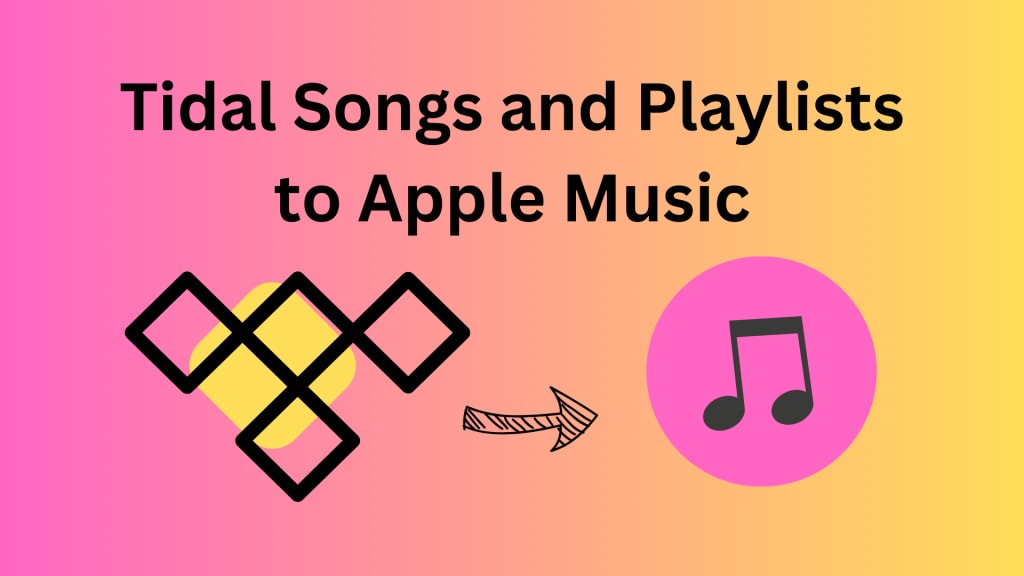
First, you need to figure out what audio format can be supported by Apple Music.
Tidal songs mostly are encoded in FLAC formats. FLAC files can not be imported to Apple Music.
And Tidal downloads are cached files, they are not allowed to transfer or play with other players.
We need an extractor to download Tidal songs and save them as local files in MP3, WAV, AIFF, or ALAC formats, then these files can be added to Apple Music’s library.
You can take these steps:
Step 1: Get the most popular Tidal downloader from the TuneCable website, and then open it.
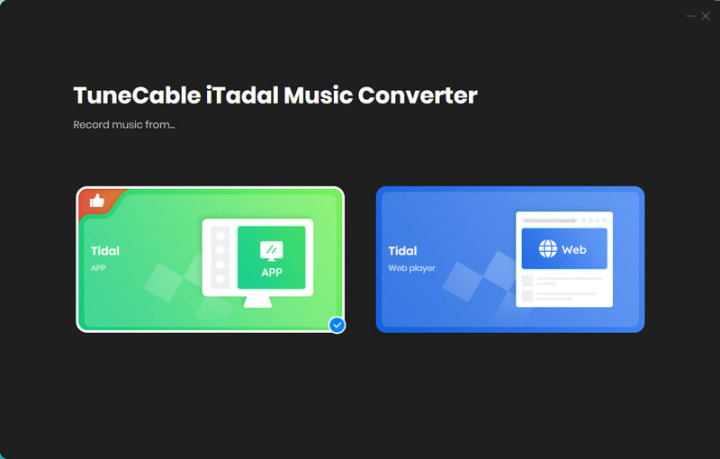
Step 2: Go to Settings and set up the output format, bit rate, sample rate, etc. according to your need. Drag music from the Tidal app to TuneCable. Then select songs you want to add to a download list.
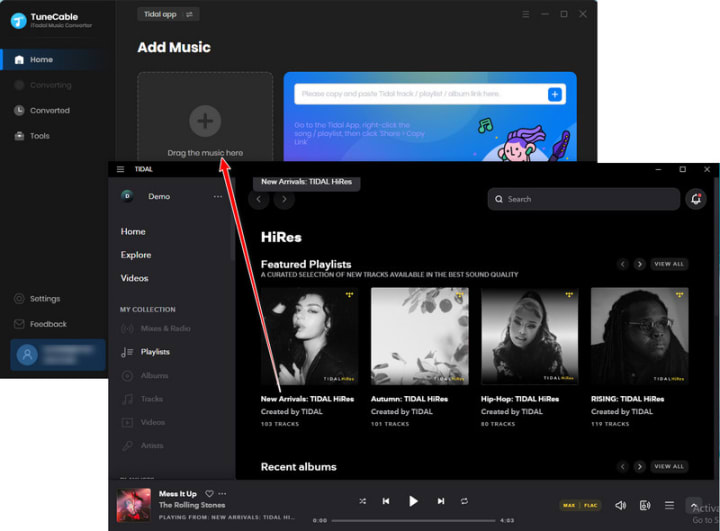
Step 3: Activate the conversion. After the conversion, you can import the downloaded Tidal songs to your Apple Music.
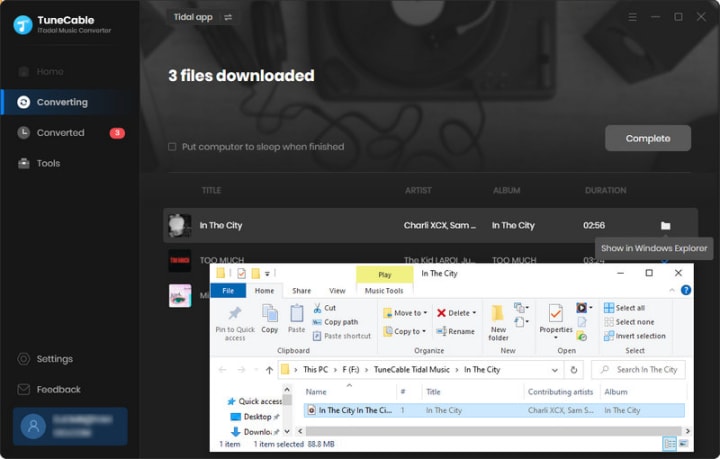
💡 Add Tidal Songs to the iTunes app on Windows PC
Step 1: Open iTunes on your computer then navigate to the top-left corner. Choose "File > Add File/Folder to Library".
Step 2: You will see a pop-up explorer window. From here you are allowed to import the Tidal songs.
Step 3: Or you can go to the "Music Playlist" tab in the left sidebar of iTunes. Then create a new playlist and drag and drop the Tidal songs from the local computer to iTunes.
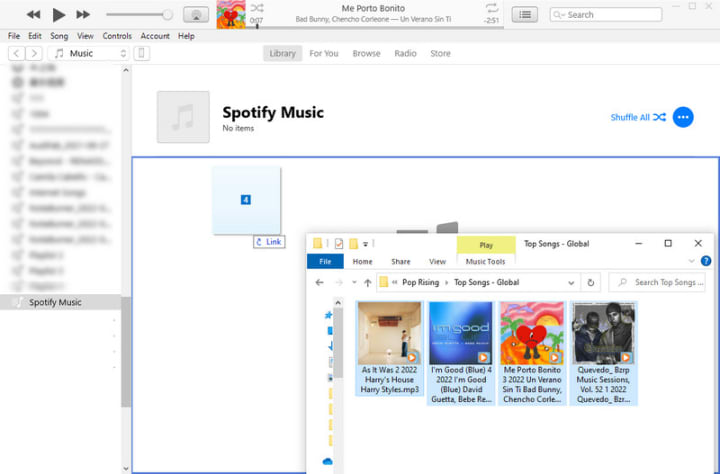
💡 Add Tidal Songs to the Music app on Mac
Step 1: Open the Apple Music app on your Mac. Then go to "File > Add To Library or File > Import". (If you selected "Copy files to Music Media folder when adding to library" in "Files" settings, you see "File > Import".)
Step 2: On the pop-up windows, find the downloaded Tidal songs. Select what you need then click on "Open" to import them to your Apple Music library.
Step 3: Or you can go to the "Playlist" tab in the left sidebar of Apple Music. Then create a new playlist and drag and drop the Tidal songs from the local disk to Apple Music.
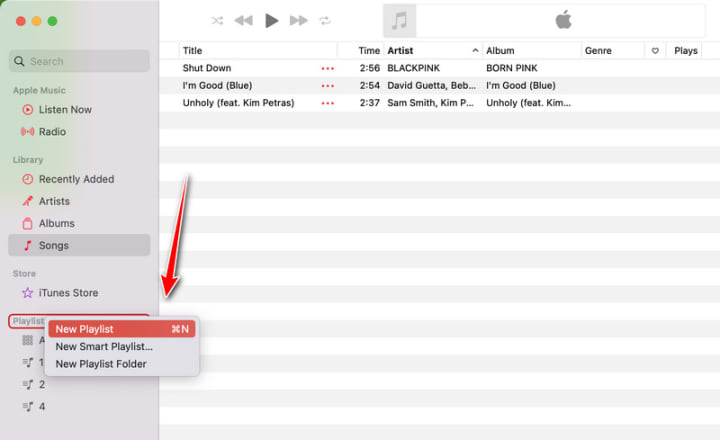
If you need to add the downloaded Tidal music files to your iPhone, you only need to sync your music library via iTunes or Apple Music.
💡 Add Tidal Music to iPhone via iTunes
# Import Tidal Music to iPhone on Windows PC
Step 1: Open the iTunes app on your Windows PC.
Step 2: Connect your iPhone to your computer. Scroll down, go to the "Music Playlist" on the left sidebar, then right-click on the "Music Playlist" tab to create a new playlist.
Step 3: Locate the converted songs and drag and drop them into this new playlist.
Step 4: Go to the "device icon" above the left sidebar and tap on it. Then go to the "Music" tab under the "Settings" section. Tick off the "Sync Music" option. Choose "Entire Music Library". Then tap on "Sync" to start updating all Music playlists on iPhone, including the newly created playlist.
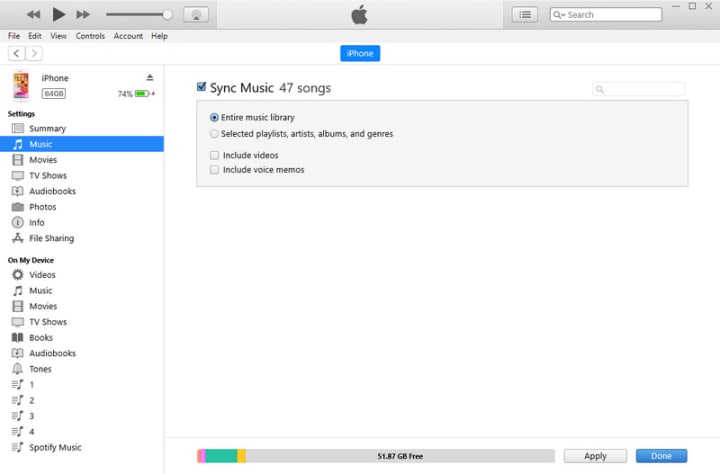
If you choose to sync the Selected playlists, artists, albums, and genres, you should be careful that you've selected the existing playlists on your iPhone. Or the existing playlists may be removed.
# Import Tidal Music to iPhone on Mac
Step 1: For Mac users, open the Music app.
Step 2: Connect your iPhone to your computer. Scroll down, go to the "Playlist" on the left sidebar, then right-click on the "Playlist" tab to create a new playlist.
Step 3: Locate the converted songs. Then go to "Library" tab on the left sidebar and click "Songs". Drag and drop the converted Spotify songs to the Library. And then right-click the newly imported songs to add them to the newly created playlist.
Step 4: Go to the "Device" column and tap on "iPhone". Then go to the "Sync Settings" in the upper right.
Step 5: Go to "Music" and tick off "Entire Music Library". Then tap on "Apply" to start updating all Music playlists on iPhone, including the newly created playlist.
If you choose to sync the Selected playlists, artists, albums, and genres, you should be careful that you've selected the existing playlists on your iPhone. Or the existing playlists may be removed.
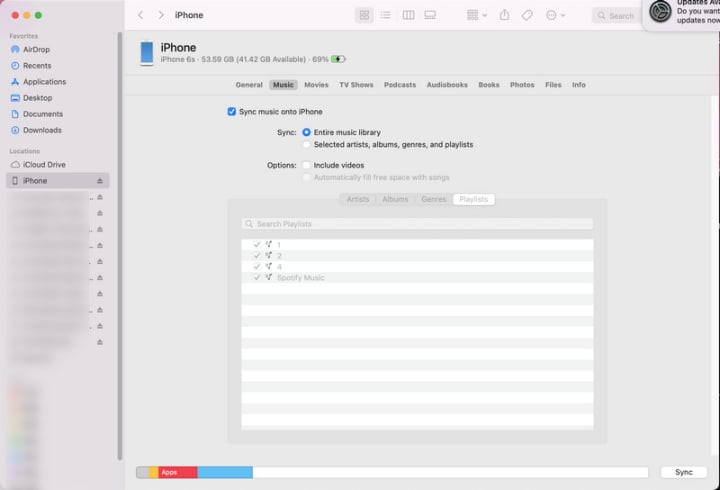
Note: If you are afraid of losing the existing playlists on your iPhone, which occasionally happens by misoperations when uploading via iTunes, you can make a backup of your iPhone. Or you can opt for the next solution to import the Tidal songs via Syncios Free.
Import Tidal Music to iPhone via Syncios Free (No Overwriting Risk)
Syncios Mobile Manager simply adds the newly imported playlists to your iPhone without removing any existing data. Therefore, it will not result in data overwriting. It's more convenient than iTunes as it can not only import files to iPhone but also export various kinds of files from iPhone to the local computer. When it comes to exporting and importing media files like audio, music, videos, and photos, you don't need to upgrade to a paid account for Syncios. And there are no annoying ads. This is a precious tool we discovered via online searching.
Step 1: Start Syncios after its installation. Double-click on "Mobile Manager" on the main interface to start the Syncios Mobile Manager instead of other tools.
Step 2: Connect your iPhone to your computer via a USB cable. Then go to the "Music" section where all ringtones, podcasts, audiobooks, songs, playlists, and other audio from iPhone will be loaded here.
Step 3: Go to the "Playlists" to generate a new playlist for adding Tidal music.
Step 4: Drag and drop the converted Tidal Music tracks to this new playlist.
Step 5: Disconnect your iPhone with the computer after transferring successfully.
Listen to Tidal Music on iPhone for Free Permanently
Step 1: Unlock your iPhone, and go to the "Music" app.
Step 2: Go to "Playlists", then you will find the newly added playlist. Open it to check the Tidal songs. They are imported as local files. You can listen to them even without a network connection. And the Tidal tracks can be imported to iMovie or other programs for free use.
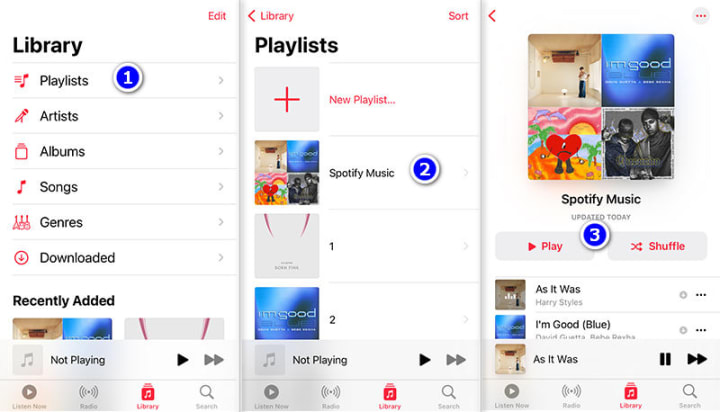




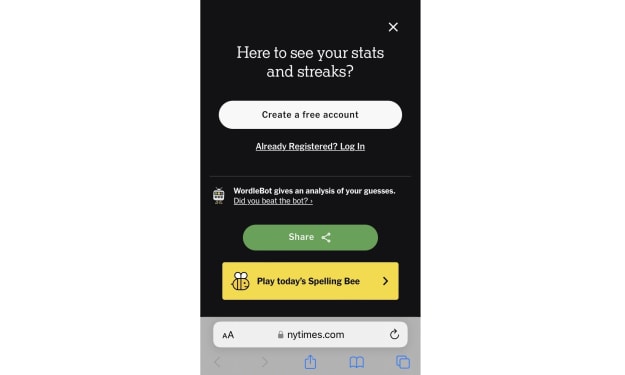

Comments
There are no comments for this story
Be the first to respond and start the conversation.